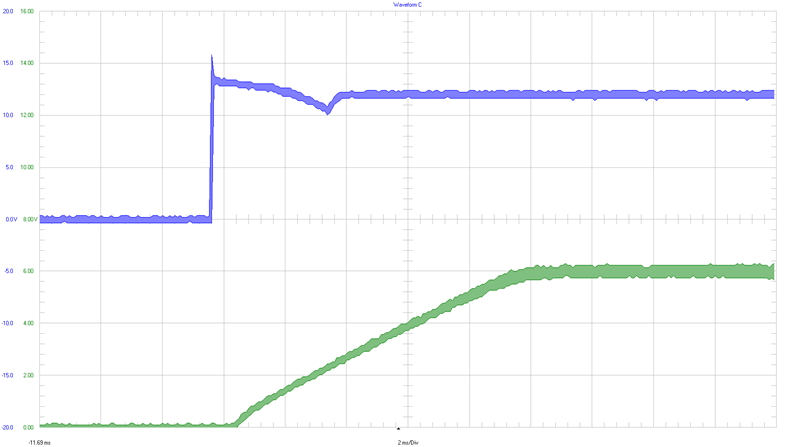TIDT316 December 2022
- Description
- Features
- Applications
- 1Test Prerequisites
- 2Testing and Results
- 3Waveforms
- A Output Ripple Reduction, Output Current Capability, and Dithering Option
3.5.2 12-V Input Voltage

|
VIN 5 V / div VOUT 2 V / div 2 ms / div 20-MHz bandwidth |
Figure 3-14 Start-Up 12-V Input
Voltage